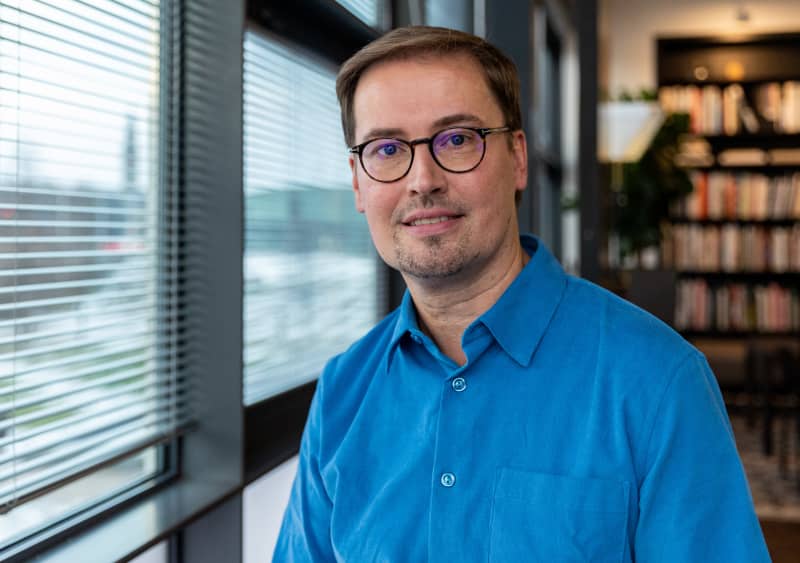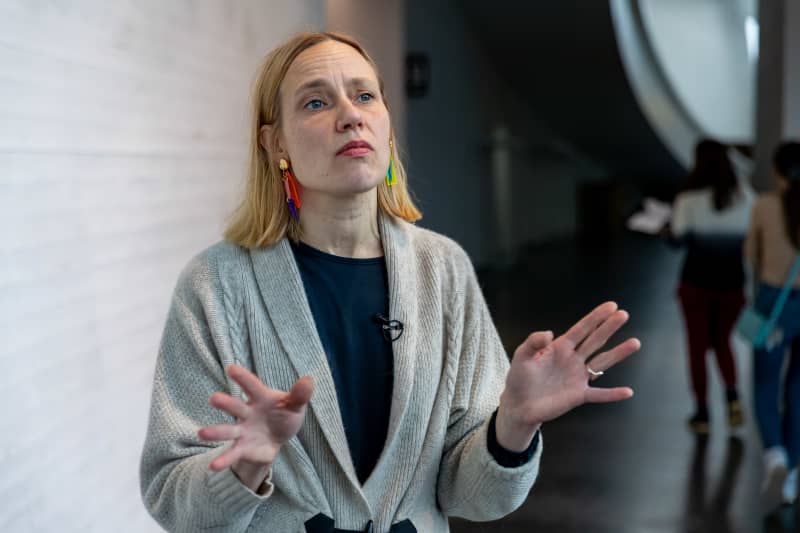
Zabludowicz considers the artists’ boycott a personal attack based on misinformation. According to the Kiasma support foundation, Zabludowicz’s explanation is sufficient.
The artists accuse Zabludowicz of supporting the Israeli state’s policy towards the Palestinians, which the human rights organization Amnesty has described as apartheid.
Read more about the case here.
Yle received a statement from Poju Zabludowicz via e-mail, which we will publish in its entirety. Below is the original English statement, translated by Yle.
Poju Zabludowicz, 1 December 2022
Poju Zabludowicz, 1 Dec 2022
Discussed with Poju
The Kiasma Support Foundation collects funds for the museum and makes art donations. Zabludowicz is the longest-serving member of the foundation.
The chairman of the support foundation, art collector Pekka Lehtinen admits that the support foundation was surprised by the strong expression of opinion.
– Tukisäätiö has admittedly been surprised by such a strong campaign targeting one board member, Lehtinen tells Yle by phone from Holland.
According to Lehtinen, the artists raised the issue for the first time already in the summer of 2021. He guesses that at that time, according to the artists, the issue received too little attention, and that is why it came up with greater force now. The opinion was discussed in the support foundation’s board already at that time.
– In the board, we have had a thorough discussion with Poju about the arguments presented by the artists. Based on the answers we received from the boy, his relationship to the conflict between Israel and the Palestinians and his concrete role in this regard is very different from what the artists have presented to us and also publicly.
According to Lehtinen, in his explanation to the government, Zabludowicz has denied that he is involved in the arms trade and unclear activities in conflict areas, as stated in the artists’ statement.
– According to Poju, he and his company have not traded arms for more than 30 years. And they are not involved in the business or real estate ownership of the Länsiranta settlements. Poju says he left communications agency Bicom seven years ago.
Bicom is a pro-Israel lobbying agency founded by Zabludowicz in 2002, to which he has donated millions of euros over the years. Zabludowicz was also the chairman of Bicom until 2013.
According to information received from Kiasma support foundation Poju, he has not been involved in Bicom’s operations for seven years.
The artists were offered the opportunity for discussion
Lehtinen emphasizes that Zabludowicz still has the support of the foundation’s board for his membership.
– Poju has wanted to continue on the support foundation’s board. The board has made a decision that he can continue for the new term of office of the board.
– Our foundation is a pluralistic community where everyone has the right to their own political opinions. What unites us is a deep interest in contemporary art and the desire to support and help Kiasma.
Lehtinen says he thinks that Zabludowicz himself has also been surprised by the strength of the sentiment and the reluctance of the artists to discuss. According to Lehtinen, the artists have been offered the opportunity to talk with Zabludowicz directly.
– Poju would have liked to discuss these artists’ views and claims directly with them, but the artists were not interested.
– We have acted as an intermediary. We have conveyed the message to the support foundation and the artists and held joint meetings. Artists have the right to express their opinion, which they do through their campaign, says Haapala.
He repeats his message from yesterday that the museum cannot boycott individual people.
– Our task is to follow the guiding actions of the National Gallery. As a museum or part of the National Gallery, we cannot boycott or oppose an individual Finnish citizen who is not on any banned lists.
Haapala hopes that the museum, as a mediator, could raise the level of discussion and the understanding of the parties.
– The parties would not necessarily change their opinion, but that they would be able to disagree in a more civilized way.
\”There are different ways out\”

In any case, Kiasma’s image has been affected by the turmoil. Haapala reminds that Kiasma must be thought of as a meeting place.
– We are a very diverse community. Now here two important partners for us, i.e. the artists and the collector, are facing each other. Their values \u200b\u200band worldviews do not meet.
Haapala says that he considers the discussion of values \u200b\u200bbrought up by artists to be important. According to him, it has been used in the National Gallery during this fall. At the same time, the museum’s own ethical and sustainable development guidelines have been revised.
The artists have demanded that Zabludowicz leave the board of the Kiasma Support Foundation. If that doesn’t happen, however, Haapala hopes that the situation will be resolved in the best possible way.
– We hope that the work stoppage would be resolved one way or another. We still don’t know how. There are different ways out, and we hope that those ways out can be constructive for this field.
The artists themselves assure that they are ready until Zabludowicz gives way.

Kalleinen expects Kiasma to act on the issue and to write down clear rules of the game between the support foundation and Kiasma. It would be important to get transparent information about what kind of private money moves between the foundation and the museum and what kind of ethical basis it has.
According to Kallinen, Zabludowicz has caught the attention of artists because many of them have a \”strong social conscience\” in the field.
– Here we are sensitive to things like justice and the use of power. They are also at the center of many art themes. Through that, museums are also happy to bring up such discourses through art, Kalleinen says.
– The danger is double moralism, that one thing is said through art, but another is happening at the level of structures. We hope that these things can be better brought to light.
